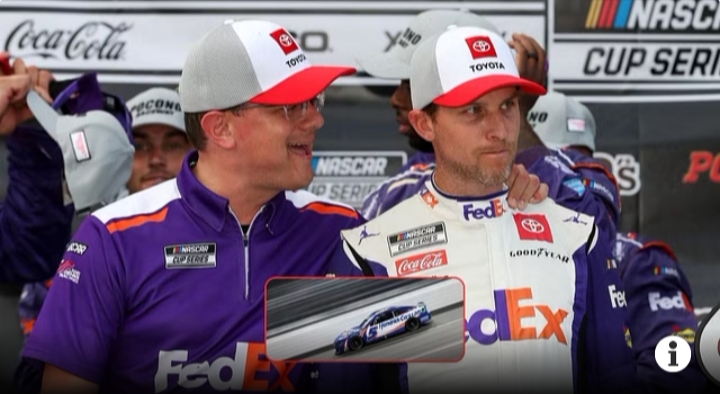After clinching victory at the Atlanta Motor Speedway in the first race of the playoff season, Joey Logano took a moment to reflect on the significant transformations within NASCAR since he joined the ranks. The driver of the #22 Team Penske car noted that the sport has experienced a total revamp, primarily driven by the introduction of Next Gen vehicles.
Joey Logano kicked off his NASCAR journey in 2008, racing in the Cup Series through three distinct car generations: Gen 5 [2007-2012], Gen 6 [2013-2021], and Gen 7/Next Gen [2022 and beyond]. The shift from Gen 6 to Next Gen represented a major leap forward, showcasing enhanced aerodynamics and downforce packages, along with the rollout of cutting-edge technologies on the racetrack. This evolution has also contributed to a more level playing field regarding speed among all competitors.
Delving deeper into this topic, Logano remarked that when he first entered the NASCAR scene, he was often labeled the most aggressive driver. Nowadays, however, aggressive driving has become a standard characteristic among racers, thanks to the consistent speed offered by the Next Gen cars. In a discussion with Jeff Gluck on The Teardown podcast, Logano expressed, “Oh, it’s… 180. I mean it’s completely different. […] Then you brought in the next gen car and it escalated it another knot to where it’s like everyone’s running the same speed, so no one ever does no give and take ever. The cars are tougher than what they were before.”
In a discussion about the transition from Gen 6 cars to the Next Gen models and their influence on the sport, Logano shared his insights: “Back in the Gen 6 days, if you made contact with another car, it would either crumple your sides or cause a tire to go down, and that was game over. Drivers were hesitant to even bump into each other. Now, it’s a different story; everyone is more willing to race closely. You could hit the wall at Darlington and not worry about a flat tire on the right rear. The new cars are built tougher, encouraging a more aggressive style of racing, which I think is a positive change.”
Joey Logano is skeptical about the return of NASCAR’s previous era of dominance.
In 2021, Kyle Larson showcased the potential for dominance by winning 10 races, including the season finale at Phoenix. Looking back, Tony Stewart had a remarkable run, winning 6 out of 10 playoff races to claim the championship. However, with the advent of Next Gen cars and the variety of track layouts, such dominance seems unlikely.
Before the Atlanta race, during a media session covered by Speedway Digest, Logano addressed the complexities of the current playoff schedule: “When you examine the playoff lineup, it features two superspeedways and two road courses. There are some truly unique tracks, making it difficult to predict outcomes. While the schedule is one factor, the competitiveness of the field with these Next Gen cars makes it even tougher to achieve consistent success.”
As Joey Logano arrives at Watkins Glen as the current playoff leader, a significant question arises regarding the level of support he can expect from his team during the race. This inquiry is particularly relevant in light of the recent performance dynamics observed with his teammate Ryan Blaney at Atlanta, where Blaney received substantial backing that played a crucial role in his success.
Logano’s historical performance at Watkins Glen adds another layer of complexity to this situation. With an average finish of 15.8 at this circuit, he has not consistently demonstrated the dominance that one might expect from a playoff leader. This statistic raises concerns about whether he can rely on his team to provide the same strategic support and resources that Blaney benefited from in a high-stakes environment.
The dynamics of team support in NASCAR are critical, especially during the playoffs when every point counts. Logano’s ability to leverage his team’s resources, including pit strategy, car adjustments, and on-track assistance, could be pivotal in determining his success at Watkins Glen. The comparison to Blaney’s experience at Atlanta serves as a benchmark for what Logano might hope to achieve, but it also highlights the potential challenges he faces given his past performance at this particular track.
As the race approaches, fans and analysts alike will be closely watching how Logano’s team rallies around him. Will they provide the same level of commitment and strategy that helped Blaney secure a strong finish? Or will Logano have to navigate the complexities of the race with less support, potentially impacting his chances of maintaining his playoff lead? The answers to these questions could significantly influence the outcome of the race and the trajectory of Logano’s playoff campaign.




